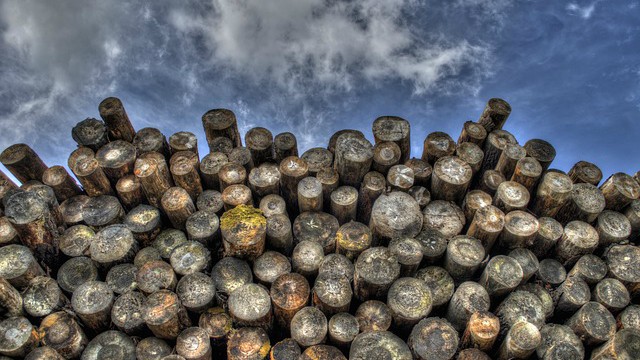West Fraser Timber Co. Ltd. (TSX:WFT) released its Q2 results Thursday last week. They showed strong sales growth of over 18%, climbing from $1.1 billion last year to $1.3 billion. The company was also able to improve its bottom line; earnings are up over 48% to $146 million for the quarter.
The company has three main segments: lumber, panels, and pulp & paper.
The lumber segment saw an increase in revenue of almost 19%, although production was up less than 3%. The company credits the improvement in the segment due to higher pricing and an overall favourable currency impact which helped improve the bottom line. This segment contributed $171 million to its bottom line for a strong margin of over 18%.
In the panels segment, sales were up more than 17% from the prior year and did not see increases except in its LVL production. LVL is used mainly for the creation of single-family homes; production rose over 42% from the previous year. An increase in plywood pricing also contributed to the segment’s improved revenues and earnings. Overall, the panels segment netted total margins of $23 million — an increase of over 27% from last year.
Lastly, the pulp & paper segment saw sales rise over 21% to $260 million for the past quarter. In this segment, there were no significant increases in production; instead, operational issues contributed to poor production at the company’s Hinton NBSK mill which, for two months, did not meet targeted production. As a result, NBSK production was down by 8% this quarter. This segment benefited mainly from increased pricing and was able to turn a profit of $32 million.
Overall, West Fraser has not seen any dramatic improvements in its production, but it has been able to bank on higher prices to fuel its revenue and profit growth. U.S. construction of new homes is off to a slow start, and as that increases, so too will lumber production. The bigger uncertainty remains around the softwood lumber duties that may not be resolved until the new year. This will impact not only West Fraser but other big producers, such as Canfor Corporation as well.
The softwood lumber issue has seen West Fraser hit the hardest with duties of over 30% this year. As a result, the company incurred expenses of $34 million relating to duties for the quarter. The CEO is confident that the company’s strong balance sheet will help it get through any issues as a result of the negotiations. Currently, West Fraser has a strong ratio of 2.6, and its long-term debt represents only 16% of the company’s total equity.
The company’s next quarter may see some decline in sales as it has had to suspend operations in certain B.C. cities due to the forest fires. This includes locations in 100 Mile House, Williams Lake, and Chasm. How long the operations will be suspended remains to be seen, and with the fires still ongoing, it would be difficult for the company to estimate when operations will resume.
West Fraser seems well poised to handle the current challenges of the industry and has shown that even with its high duties, the company can continue to perform well and turn a profit.
 Spring Sale
Spring Sale








